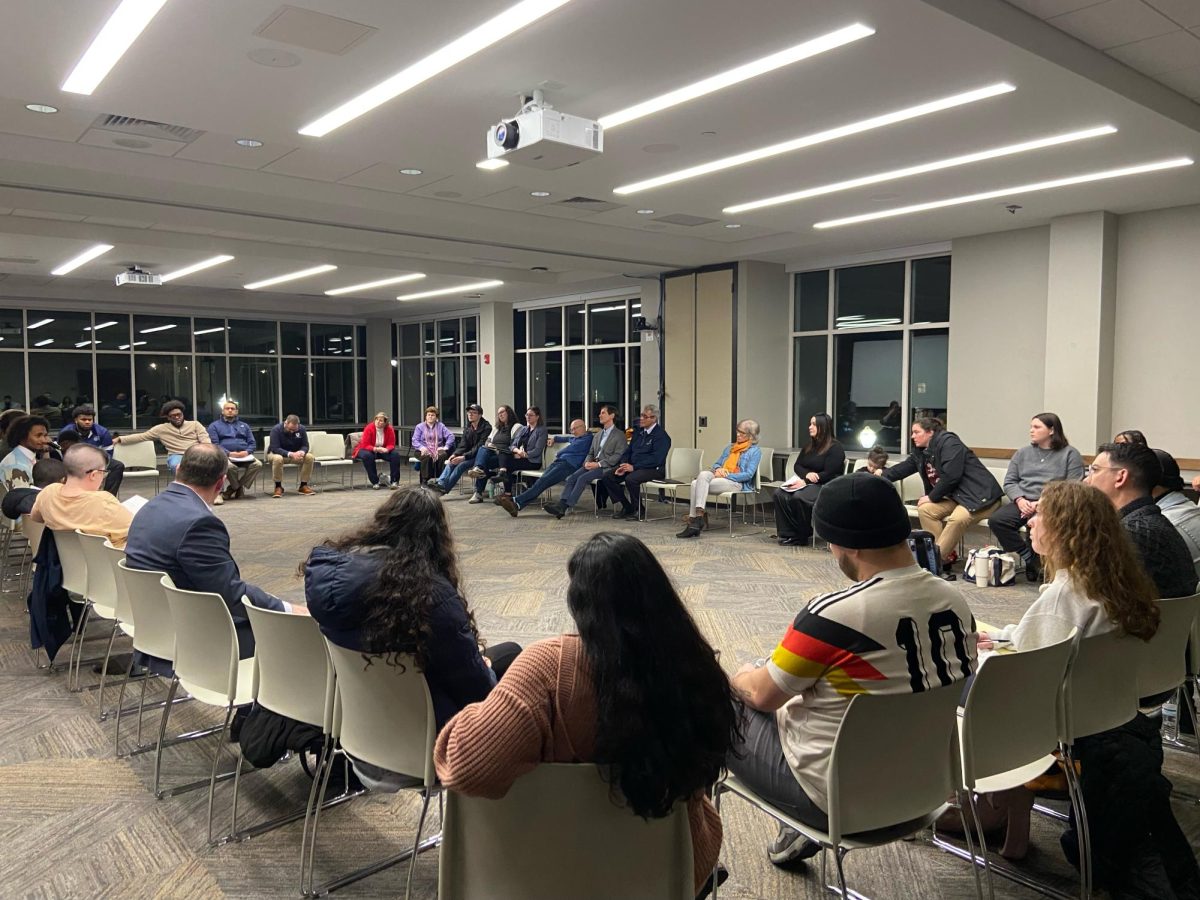The Men of Color group hosted its third open dialogue aimed at breaking down barriers between students and faculty to promote positive, inclusive change at Saint Anselm College.
“Our mission is to fight for the proper perception, projection and power of misrepresented and underrepresented groups on campus,” said Noah Gutierrez, Men of Color President.
The dialogue is designed to welcome all members of the Anselm community to leave their labels at the door and focus on issues that matter. “I think we do a really good job of creating a space where we can speak as humans, as adults.
He explained how the group began six years ago with seven or eight men of color who met in the Lower Church, but it has quickly grown to encompass 73 members and include people of all backgrounds. “’I’m glad that now our mission far outweighs the name and people know that men of color events are not just open to men of color, we want to work with anybody who wants to work with us,” he said.
“The first dialogue was a presentation of all the cards set out on the table and I think that there has been irrefutable progress and growth from the student body,” said Gutierrez.
The most recent dialogue differed from the previous events in two key ways. First, the group sent out a Google form to anonymously collect information from students and faculty to get a sense of what issues are most important to both groups. Second, the event was moderated by James Maloney ’24, rather than previous dialogues which were led by Gutierrez. “I think that’ll really help facilitate a discussion in the sense where I can genuinely be there present as a student and share my thoughts,” said Gutierrez.
Looking ahead to the spring semester, Gutierrez said that he is not sure if the MOC will host another dialogue as they are actively planning a fashion show in collaboration with Southern New Hampshire University.
The dialogue had a turnout with students ranging from all grade levels, as well as faculty members of several academic departments, members of administration, and members of Dining Services. Gutierrez prefaced the dialogue by enforcing that while in the discussion, “there is no more authoritative presence,” prompting the faculty members to allow the students “to speak freely, not in terms of teacher-student” or in other terms of “higher ups”.
The dialogue covered various discussion topics, stemming from the anonymous Google Form that the Men of Color club had sent in an email to students and faculty members. The discussion topics ranged from student health concerns, mental health resources on campus, dining services, campus housing, and what it means to be Anselmian.
The dialogue format allowed students and faculty to freely discuss opinions and concerns about the discussion topics, with many participants sharing personal experiences. Students and faculty both had opportunities to voice their opinions and give insight on how to make changes that would best serve students’ and faculty members’ well-being.
A major concern regarding health and well-being was about the lack of accessibility on campus for people with disabilities. Noted by a student was the lack of accessibility in Alumni Hall in particular, for someone with a disability. A faculty member of the Science Department noted that accessibility on campus “[is something] that affects everyone,” and that disability does not just impact certain individuals.
Mental health resources on campus was another topic that was thoroughly discussed in the dialogue, stemming from concerns about the lack of resources, such as therapists, for students. The concerns, coming from students, were immediately addressed by a member of administration, who said “we’ll keep trying,” to advocate for students and to get the resources that they need.
A widely and thoroughly discussed topic was the issues regarding Dining Services and the food at Davison Dining Hall. A faculty member of Dining Services responded to those concerns with great intent, emphasizing the importance of communication regarding student satisfaction. The Men of Color sent an email to the student body a few weeks prior that highlighted food that was substandard.
The primary concern that was voiced at the dialogue was regarding the overall level of communication at the college with all student concerns of the varying topics. Gutierrez thoughtfully noted that when it comes to issues on campus, “it’s not necessarily miscommunication, but a blatant lack of communication.”
The Men of Color dialogue expertly prompted open communication between students and faculty, breaking down barriers about student and faculty concern. The dialogue successfully allowed participants to freely express their opinions and experiences with openminds, with the hope of progressing the student experience at Saint Anselm.


